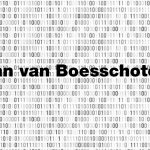Government Digital Service (GDS) is hoping the successful deployment of its £400m digital identify system, One Login, will help the UK government regain its standing as a digital leader in the eyes of the United Nations (UN), its CEO has revealed.
The system will be mandated for use by all government departments, several of which are presently in the throes of beta testing it, and is geared towards providing a more personalised and tailored experience to citizens when accessing the government’s wide range of digital services.
Specifically, the One Login system is designed to provide citizens with a single sign-on and digital identity verification portal to access government services through, and is the successor to the troubled GDS Verify project.
The One Login system is being hosted by Amazon Web Services (AWS), and on the same day details emerged about a raft of system delivery contracts GDS has signed to support its roll-out, two senior tech leaders tasked with overseeing its development spoke at the AWS Public Sector Summit in London.
Among them was GDS CEO Tom Read, who told attendees about the various projects the organisation has underway in support of its work to provide citizens with an online front door to the services offered by governments via Gov.uk.
A departmental priority on that front at the moment is taking steps to ensure Gov.uk works better on mobile devices by reducing the loading times for pages and the amount of data they consume to bolster the site’s accessibility.
“We’re spending a lot of time at the moment making sure it’s mobile-first,” he said. “People who use government services a lot … tend to have an older, cheaper mobile device with not much data.”
User experience
As well as ensuring the accessibility of government services, another top priority for GDS is providing citizens with a “consistent” and “coherent” user experience that they can be confident works so they can complete whatever task they are trying to do wholly online.
As an example, Read pointed to the uncertainty that sometimes blights users when they go to make payments for government services online, which prompts them to abandon what they are doing in favour of trying to pay by phone instead.
“When you’re making a payment online, people get very nervous,” he said. “We’ve trained them to think, is this a scam? Is this legit? And our research shows that where the user experience changes, people get nervous and try to pay with the phone instead. User experience needs to be consistent, [it] needs to be coherent, so that people keep that trust.”
Otherwise, they will default to getting on the phone to government call centres, which Read acknowledged can be a frustrating experience, but is also one that can be costly for taxpayers, too.
But while GDS is keeping busy and focused on improving the online user experience for citizens, Read acknowledged that – in recent years – the UK has found itself “leapfrogged” by other nations in terms of the quality of service it provides. And this is something he is keen to correct.
“In 2016, we were ranked the top digital nation in the world in the UN e-government rankings,” he said. “And then, a couple of years later, we slipped to fourth, and then we slipped to seventh, and at the end of last year, we slipped to 11th – so we’re not even in the top 10 anymore.
“We’ve been overtaken by countries like the Netherlands and Iceland … and the United States, and others, and we need to work out why that is. The good news is that our scores in the UN e-government index haven’t really changed that much. They’ve been very static over the past 10 years. The bad news is that everyone else’s scores have gone up. So … we’re missing something.”
To establish what that missing ingredient might be, Read said the organisation has looked to the private sector for inspiration, and at how people are “interacting online in their personal lives”, as well as examining the digital initiatives governments in other countries are rolling out.
As examples, Read pointed to Denmark’s efforts to digitise its communication processes, which have seen the government ban people from posting letters, and the legislative changes that have been pushed through in Ukraine so citizens can store government documents on their smartphones.
Looking at how other countries do things has prompted GDS to conclude the government user experience needs to become more tailored and personalised, which is something it is looking to achieve through the roll-out of One Login and its technology tie-up with the Gov.uk Accounts system.
The latter is a single sign-on system that is billed as a way to deliver a more personalised service for users of the government website.
“We don’t want to abandon what we do already… but we need to start looking to the future [and] at how we can start getting personalised, and start tailoring services around the user. It will start with Gov.uk One Login,” said Read.
“For a lot of people … who interact with government all the time, that [lack of personalisation] doesn’t work very well at all, because every time [they engage], you’re treated like a stranger … and it’s not tailored to your experience. That’s one of the paradigms we need to really start challenging.”
Online retail hub
One of the user experience models GDS is looking at for inspiration is the one offered by the Amazon online retail hub.
“How does Amazon do it? Amazon immediately knows who I am,” he said. “I’m logged into a persistent experience. It knows my fulfilment details and it recommends things based on who am I and what I’ve bought before.
“It knows my banking details, [and] this works really well for Amazon because it means I can just buy something within about 10 seconds without even remembering [because] I’ve done it so frequently. It works very well for the user.
“It’s similar in banking and transport, and in a lot of people’s lives you have this hyper-personalised, logged-in assistant, recommendations-based experience, [but] we just don’t have that in government at the moment,” said Read. “I think we need to keep thinking about it.”
Going under the hood of One Login
Elsewhere during the keynote, Natalie Jones, the director of digital identity at GDS and the person responsible for overseeing the delivery of One Login, provided attendees with some insight into the system’s inner workings, which make use of the AWS serverless infrastructure.
“We were and remain the only major government digital transformation programme to be entirely serverless,” she said.
The decision to make One Login a serverless system predated the start of Jones’s work on the project, which began around 18 months ago. “I’d be lying if I said when I turned up, I wasn’t a bit nervous when I found this out … [because] you can’t help but wonder if it’s such a no-brainer, why [are you] the only one doing it?”
She also revealed there was some pushback among some members of the One Login tech team about the decision to go serverless, which she said might have taken some attendees by surprise.
“On the one hand, you would think that learning a new skill, putting something on your CV, doing something that’s a bit cool and cutting edge might be the way to your developers’ hearts, but a number of our engineers were distinctly lukewarm about the prospect,” said Jones.
“They didn’t really want to let go of their old ways of working and embrace the possibilities. We found that our junior engineers were far more likely to become early adopters and advocates for the change than our more senior technical leaders. We discovered that what people really needed was time and space to explore what serverless meant in their context and within their teams.”
The benefits of going serverless
Fast forward to now, and Jones said the benefits of going serverless are evident to see, from a cost-effectiveness, scalability and resiliency perspective, especially given how prone to unexpected peaks in demand some of the government’s online services are.
“We are subject to the Martin Lewis [Moneysaving Expert] effect [where] more than once now government services have seen an almost tenfold spike in traffic after Martin has gone on the TV or a radio show to tell [people] to check if they are eligible for a [government benefit of some kind],” she said.
“It also increases your agility and decreases operational load on your teams, because they can focus on writing and deploying code and they don’t have to worry about managing infrastructure. And, finally, it has security benefits because you can be really fine-grained about your controls. We at GDS can work out in the open, as is our practice, but also lock down really key elements of the system if required.”
For any other government tech leaders considering going down the serverless route, Jones said they need to be aware of the ripple effect it will have on how their whole project is run.
“It’s not just a choice about infrastructure, it’s actually so much more than that,” she said. “The choice you make ripples through everything: how you write your code, how you structure your tests, how you run your live service and – even potentially – how you structure your teams. And I don’t think we got that to begin with.
“If you’re going to do it, you’ve really got to go all-in. You’ve really got to think about it from the offset, because some of the things you do will no longer be appropriate.”
Technical difficulties
As an example, Jones said her team initially ran into technical difficulties on account of the fact that some of the developers had written code without thinking how it would run in a serverless environment, because they were so used to working with containerised setups.
“The net result was that services were slow to respond and we had unacceptable response times for users,” she said. “Now, you can provision pre-warmed Lambda [as a workaround for this] but if one of the benefits … is only using the thing when you need it, that’s essentially the equivalent of parking your car and leaving the engine running in case you want to go somewhere later.”
The team has now overcome these teething problems, said Jones, and have a mature, continuous delivery pipeline up and running that is allowing it to roll out more than 200 changes to the One Login production environment each week, in a “completely frictionless” way.
“It’s been a voyage of discovery and we’ve learned loads from the process,” she said. “If you’re sitting out there and thinking about making the leap, or thinking about serverless as the answer to some of your challenges, I’d say be courageous and go for it.”















